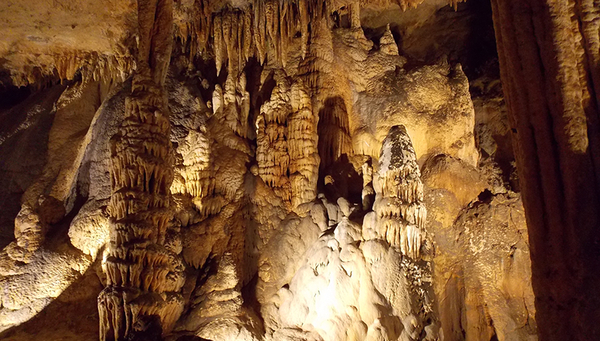News Detail
Stalagmites as climate archive
August 2, 2018 |
Up until now the CVCS has only been used with stone that was formed in warm epochs. But now a research group led by Eawag has demonstrated that the process is also suitable for stalagmites that formed during cold climate phases. The instrument can therefore be deployed to create a complete reconstruction of climate history extending back thousands of years. This is possible because the solubility of the noble gases argon, krypton and xenon is dependent on the water temperature at the time of inclusion, among other factors.
Stalagmites that grow from the ground towards the ceiling are better suited for climate research than the hanging stalactites for physical reasons. [pxhere/cc]
Graphic from the study: With the approximately 25 cm long dripstone from the Milandre Cave in the municipality of Boncourt (Canton Jura), the cave temperatures could be reconstructed up to 14,000 years before today.
Publication
Noble gas based temperature reconstruction on a Swiss stalagmite from the last glacial–interglacial transition and its comparison with other climate records. Ghadiriab E., Vogel N., Brennwald M. et al, Earth and Planetary Science Letters; Volume 495, 1. August 2018, Pages 192-201; https://doi.org/10.1016/j.epsl.2018.05.019


![Stalagmites that grow from the ground towards the ceiling are better suited for climate research than the hanging stalactites for physical reasons. [pxhere/cc]](/fileadmin/_processed_/3/d/csm_tropfsteine_80180cb643.jpg)
